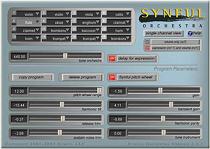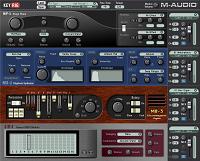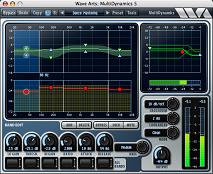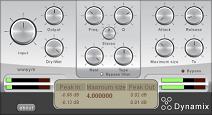Intuem is an unusual sequencer that tries to preserve a human feel to the music. Its makers, Companion, say “The most beautiful music doesn’t often come from a sequencer, it usually comes from the heart of an artist and is captured directly to tape. It has long been the problem that a sequencer cannot easily accommodate dynamic, free flowing, beautiful music that respects a sequencer’s bar and beat boundaries so looping tools and rhythm machines keep in sync. Intuem 3.5 puts an end to that.” Intuem version 3.5 adds a raft of new features, including extensions to Intuem’s core functions. There’s also external sequencer control, which means you can use Intuem to control the tempo of your entire studio — and tempo is Intuem’s speciality.
Here are some of the highlights of Intuem version 3.5.
Enhanced Note Refitters
They’re Intuem’s killer feature and we’ve made them even better. Not only can you squeeze and stretch notes to fit them into the bars and beats where they belong, but you can now shift notes in time to bring a section to the right starting point. The note refitters now automatically snap to the exact boundaries of a selection when you bring them on-screen and they also automatically quantise the appearance of your music giving you instant results.
No other sequencer for the Mac has the amazingly useful Note Refitters, and they are the key to making dynamic, natural sounding, variable tempo music with your computer. With Intuem’s new synchronisation abilities you can work with a beautiful, living performance in Intuem while enjoying the Apple Loops, video synchronisation and more through other sequencers running in sync.
Mix Easier
Intuem’s mixer controls add a new level of ease-of-use to software mixers. The controls show value ranges proportionally and are easier to read and control with the mouse than conventional linear or circular sliders. There’s even a dedicated controller for graphic equalisers and similar slider arrays.
Intuem’s mixer controls are unlike any other sequencers’ because not only do you get to control MIDI & AudioUnit parameters in the mixer, but you get to choose what kind of controls to use and how they appear on screen.
Low Overhead
You know that converting MIDI tracks to audio and freezing audio tracks into a single audio clip is a great way to manage a composition, but now you can reduce your CPU load even further. Intuem 3.5 lets you hide tracks so they’re off screen and removed from Intuem’s audio processing pathways. When you save your composition they’re saved too, and you can bring them back into the composition any time you need. Now you can keep all your hard work and not have your CPU pay for it!
Intuem does ReWire
Intuem is a complete ReWire mixer with the ability to use any ReWire device, like Reason for example. You can connect and control ReWire devices with Intuem and hear their audio output through an Intuem audio track, through any AudioUnit processing you want on the track and then through Intuem’s mixer out to your speakers. You can convert ReWire MIDI tracks to audio, and freeze ReWire audio tracks into a single audio clip as well as record un-processed audio from ReWire devices.
What you see is what you get
We understand that your music is much more important to you than a clever interface that fills the window with tools, dozens of pop-ups and columns of tiny buttons so we put all those things away in an info window you can call up only when you need to and laid them out in sensible groups so you can find what you need quickly and easily. What buttons we did keep on screen are arranged clearly, and take up a very small area, leaving you with lots of space to spread out and do what you love to do.











